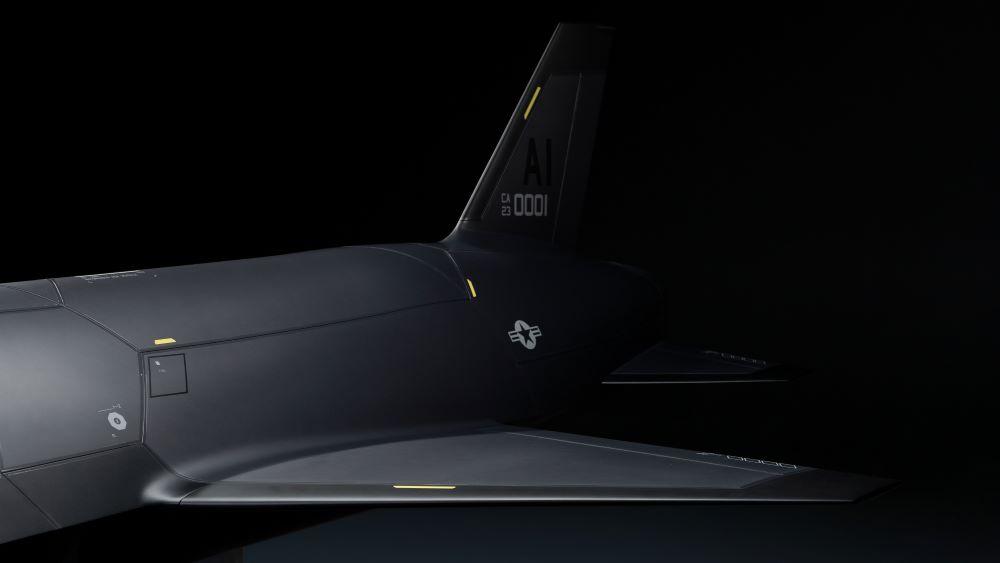
A concept image displays the developmental Fury UAS design.
Anduril Industries announced on Sept. 7 that it has acquired North Carolina-based Blue Force Technologies (BFT) and the small firm’s large uncrewed aircraft system (UAS) development program to bolster its campaign to compete with sophisticated autonomous vehicles offered by traditional defense contractors.
The acquisition for an undisclosed sum means Anduril inherits BFT’s Fury program, a Mach 0.95 Mach-capable UAS design touted with “fighter-like performance.” Despite completing a critical design review and wind tunnel testing of an integrated propulsion system, the U.S. Air Force abandoned the Fury development program earlier this year after the cancellation of the Adversary Air-Unmanned Experiment (ADAIR-UX) requirement.
Now revived by the California-based startup defense company, a future Fury flight test aircraft will provide a large, high-speed platform for testing Anduril’s recently launched Lattice for Mission Autonomy software, just as the Air Force and U.S. Navy seek out concepts for a family of Collaborative Combat Aircraft (CCA).
“Our intent is to really pour further [internal research and development] investment into this team, the Fury aircraft, and future capabilities that we can build together,” Chris Brose, Anduril’s chief strategy officer, said in an interview.
Asked if the Fury offers Anduril a platform for a CCA bid, Brose expressed strong interest in “CCA-like” capabilities, but did not provide any specifics on the company’s plans.
“We are very excited to see what the future holds in terms of opportunities. But yeah, in terms of the need for CCA-like capabilities to exist and exist on rapid timelines and large scale, we’re all-in on that vision,” Brose said.
The acquisition adds more hardware to Anduril’s growing product offerings, including the Adranos solid rocket motor firm acquired in June, the autonomous underwater vehicle developer Dive Industries in February 2022 and the Area-I air-launched effects developer in April 2021. Those products add to the self-developed Ghost small UAS launched in September 2020 and a turnkey counter-UAS system.
“Since Day 1, Anduril has been both a software and a hardware company,” Brose said. “It’s very difficult to build software in the absence of real hardware expertise, and vice versa. The only thing that’s different now is that we’re delivering far more complex, larger-scale and more operationally relevant solutions than the first year we were a company.”
Anduril is developing the Lattice autonomy system for each of the hardware product offerings, but there is no exclusive relationship. The Fury or Ghost could be integrated with another autonomy system, and the Lattice could be installed on products by other companies, Brose said.
In addition to the Fury program, the acquisition of BFT also gives Anduril an integrated aerostructures manufacturing company, including advanced composites. Fury has built flying prototypes for a wide range of aeronautics clients, including in the electric vertical takeoff and landing industry.





